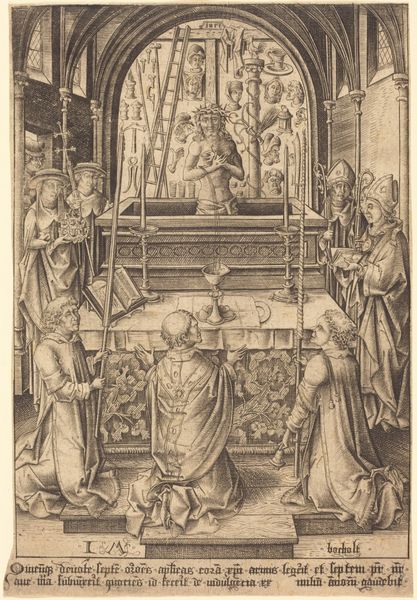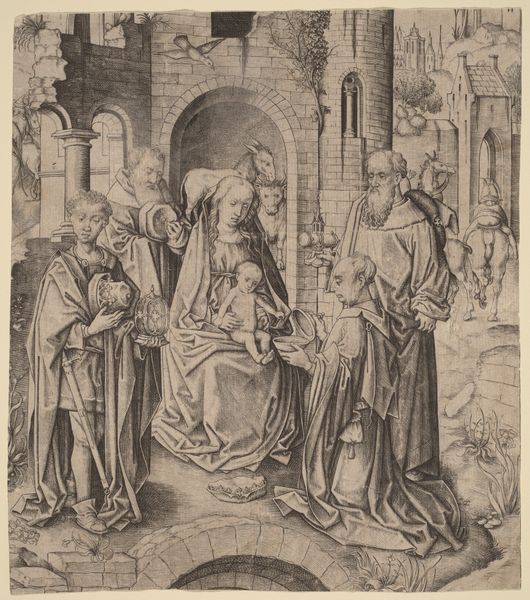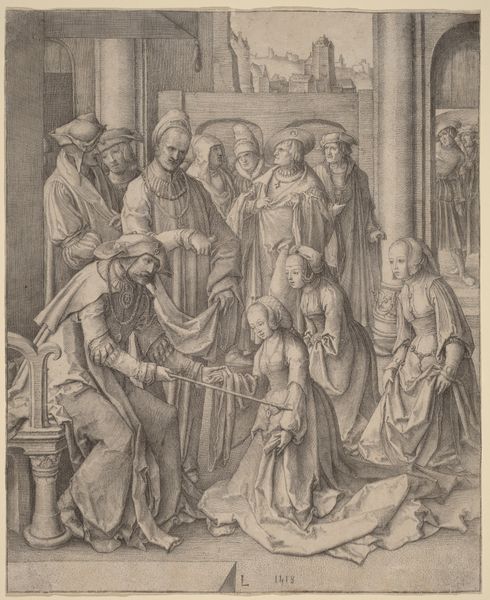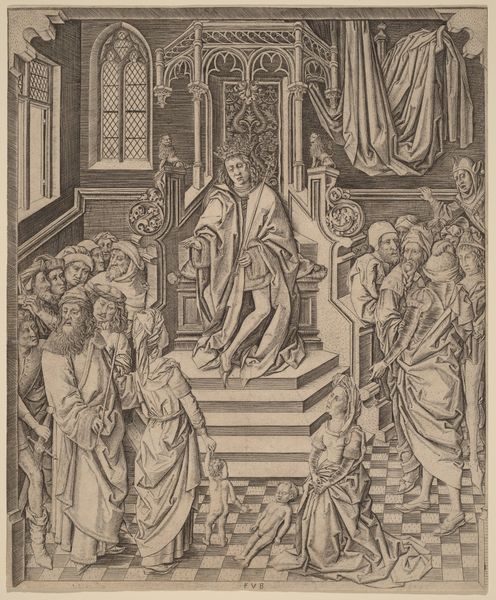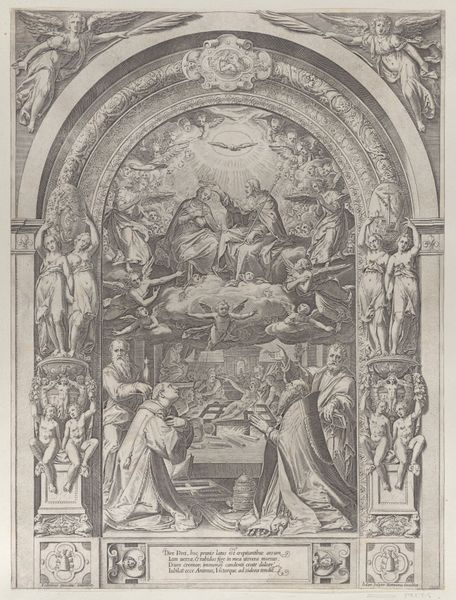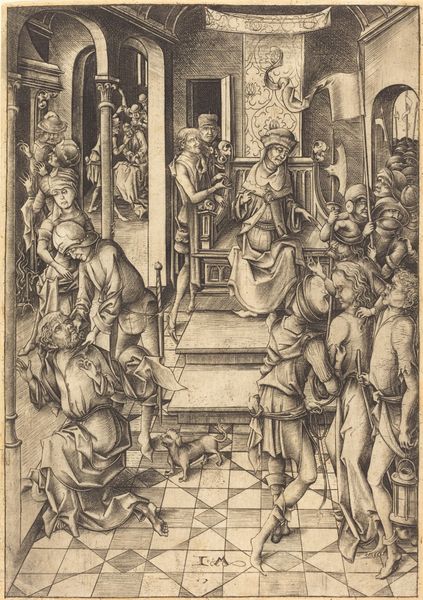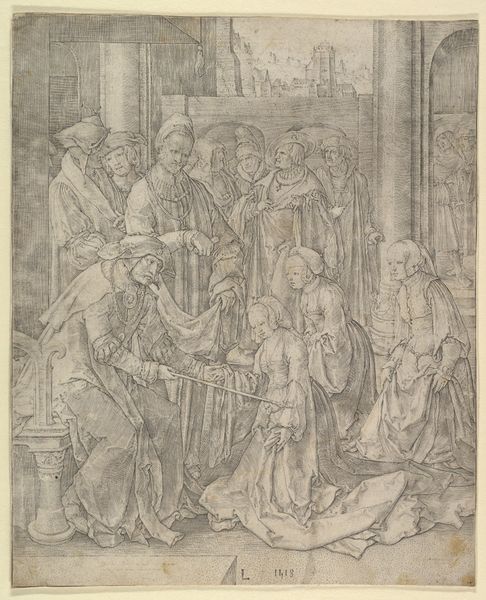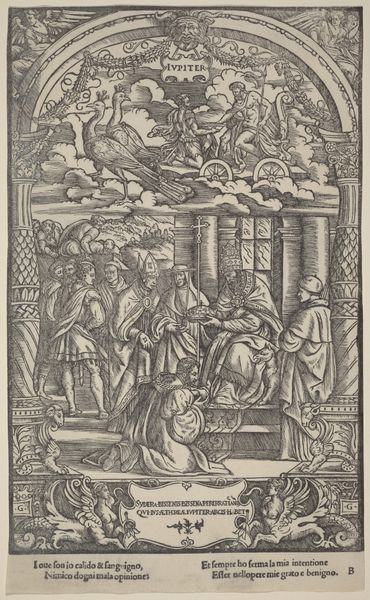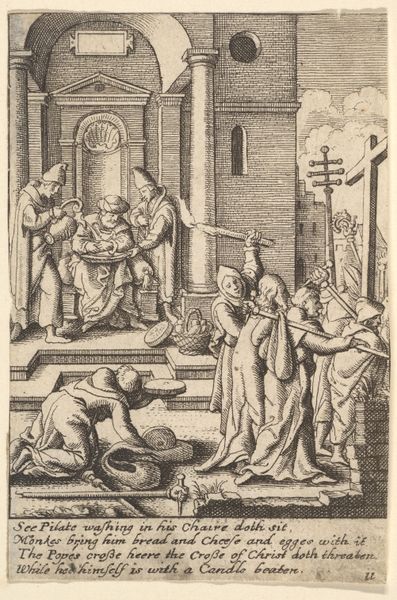
print, engraving
#
narrative-art
# print
#
classical-realism
#
figuration
#
history-painting
#
italian-renaissance
#
engraving
Dimensions: sheet: 16.1 x 13.6 cm (6 5/16 x 5 3/8 in.)
Copyright: National Gallery of Art: CC0 1.0
Curator: Lorenzo Costa created "Presentation of Christ" around 1502, a print realized through engraving. A formal examination reveals a fascinating composition, doesn’t it? Editor: Absolutely. My first impression is that of constrained emotion—there's a sense of hushed reverence in the tight hatching. The whole scene feels intensely structured, almost rigidly so. Curator: Notice how Costa uses vertical lines to emphasize the temple setting, contrasted by the gentle curve of the figures presenting Christ. The visual hierarchy is striking; observe how your eye is immediately drawn to the central figures through both placement and detail. Editor: It's difficult to miss the religious symbolism at play, too. The figures surrounding Christ are each laden with symbolic meaning – figures kneeling in supplication, others standing by in observation of an important event. The backdrop altar draped with decorated fabric adds significance to this important moment. There’s a sense of deep ritual being portrayed here. Curator: Exactly. And see how he manages depth through subtle variations in line weight and density, despite working only in engraving. He uses light and shadow sparingly to create an illusion of three-dimensionality within the essentially flat plane of the print. The structure is more impactful due to his unique methodology. Editor: And how the architectural backdrop frames the holy scene. The arch and ornamentation seem to consciously draw a parallel to classical forms, but Christian motifs prevail, imbuing the piece with that sense of awe. It's a careful weaving of religious and cultural reference, so interesting in an era that saw massive change. Curator: Ultimately, Costa achieves a complex synthesis of linear precision and emotive depth, making the work an exemplary piece of early 16th-century printmaking. Editor: Yes, revealing not only religious practice but also that vital relationship between the human and divine through carefully constructed and familiar symbolism.
Comments
No comments
Be the first to comment and join the conversation on the ultimate creative platform.
